It’s a lot of fun to ride jet skis throughout the summer. It’s important to properly winterize your jet ski so that you may use it again in next summer. Jet Ski winterization is removal of all moisture from engine and all inner working parts of jet ski.
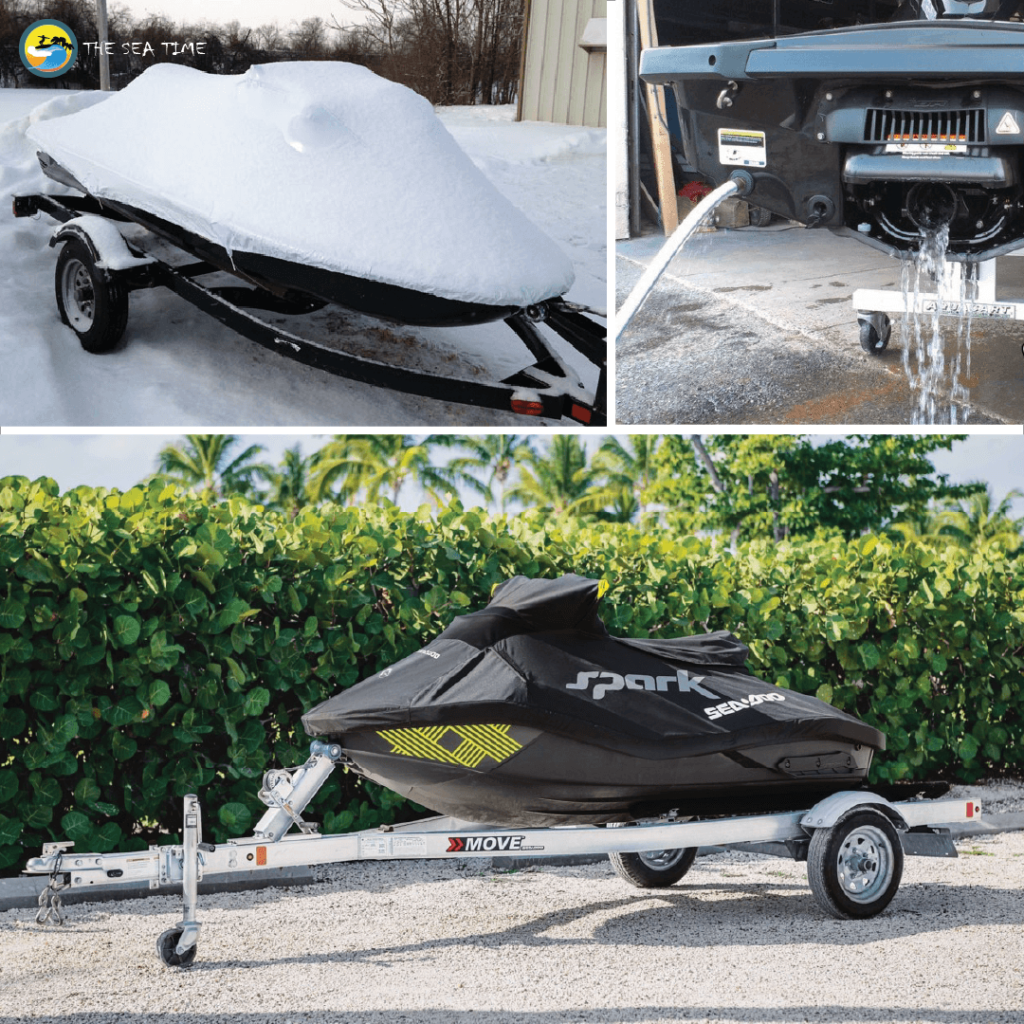
But if you live in a state where the weather changes, including getting cold, you will need to winterize and store your jet ski completely. If you live in a warmer region, you can probably leave your jet ski at a wet dock, and “winterizing” is more of a figure of speech.
Why You Need to winterize a jet Ski?
A Sea-Doo or Yamaha won’t function to its full potential unless you take the time to winterize it each year. If you’re storing your Sea-Doo, Yamaha, or any jet ski for an extended period but neglect to conduct the necessary preventive maintenance, you might spend a lot of money. Negligence may lead to several problems, including a clogged fuel system, a dead battery, and severe internal damage. Complete winterization is required if you live in a region with cold temperatures. The procedures for winterizing the jet ski are the same regardless of brand or model.
This manual will instruct you on how to store your jet ski for the winter and retrieve it in the spring.
Things You Need to Winterize the Jet Ski
The following items are required to store your jet ski away for the winter properly.
Steps To Winterize the Jet Ski
The following are the recommended procedures for preparing a jet ski for winter.
- Empty the compartments where your gear is stored
- Remove your jet ski from the water
- Reposition the jet ski for draining
- Turn the throttle back and forth to drain the water
- Run antifreeze through your system
- Flush the mixture through the exhaust system
- Stabilize & top up your fuel
- Lubricate seals, cables, and exposed parts
- Spray fogging oil in the carburetor and spark plugs
- Prevent critters from finding a new home
- Remove the Battery
- Charge the battery
- . Change the Oil
- . Add a Cover
- Best Jet Ski Storage Option
1. Empty the compartments where your gear is stored
Now is an excellent time to go through your storage areas and eliminate everything you do not need until next year. Please remove the towels, toys, and other objects, and give each compartment a good wash down to ensure it’s dry and clean. A dryer sheet or cloth sprayed with peppermint spray will stop animals from making a nest inside and keeping them left open can avoid moisture buildup.
2. Remove your jet ski from the water
Quickly remove your jet ski from the water after your last season ride. Drive carefully down the ramp with the trailer connected to the rear of your vehicle until the trailer is completely submerged. The next step is to go on your jet ski, pull it up onto the trailer, and secure the hitch. Get back in the car and continue carefully to pull the jet ski out of the water.
Ideally, you’d do this with a friend so that one of you could drive the car and the other could pilot the jet ski.
3. Reposition the jet ski for draining
For efficient drainage, your jet ski’s front end (bow) must be higher than its back end (stern). It would help if you stowed your jet ski on the trailer with the rear lower than the front.
4. Turn the throttle back and forth to drain the water
Start the jet ski and use brief, intermittent bursts of speed to move it back and forth. Break it up into 30-second bursts so as not to overheat. Do this repeatedly until the jet ski stops leaking water.
5. Run antifreeze through your system
Suppose you reside in a region where temperatures dip below freezing during the winter, and you want to store your jet ski outdoors. In that case, antifreeze is pumped into the system to prevent residual moisture from freezing and damaging the surrounding area. To prevent your recreational vehicle from freezing, use just RV antifreeze. It has a negligible impact on the natural world. While the jet ski is in storage, the antifreeze will prevent fluids from freezing in the exhaust system. Use a five-gallon (18.9 L) bucket to combine one gallon (3.8 L) of RV antifreeze with one gallon (3.8 L) of water.
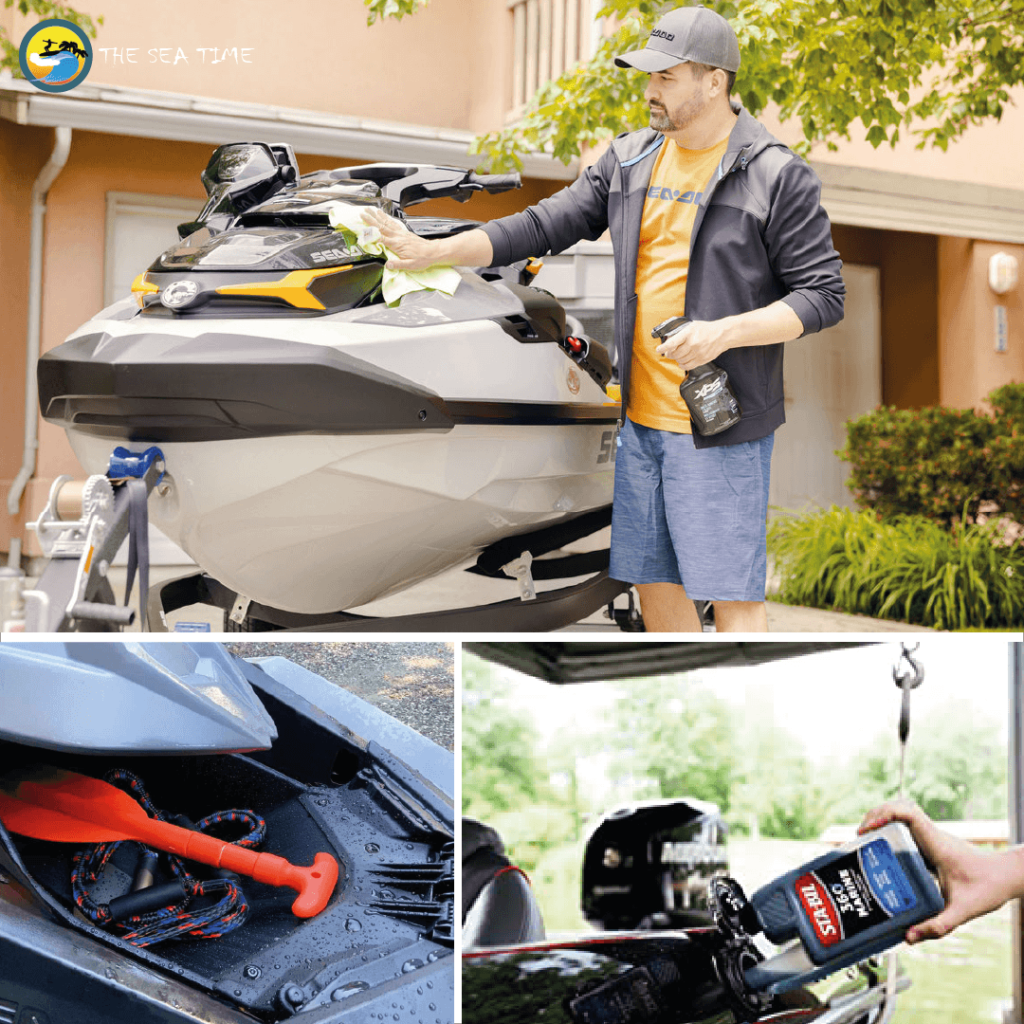
6. Flush the mixture through the exhaust system
The flush outlet should be connected to a hose or water pump, with the other end buried in the antifreeze solution. Once the entire mixture has exited the exhaust system, start, and stop the engine.
7. Stabilize & top up your fuel
Keeping your jet ski tank at least half full when not in use can prevent condensation from accumulating on any exposed surfaces in the fuel system. You may stabilize your gasoline by adding a stabilizer from a bottle and running the engine for short bursts of 30 seconds. Adding the stabilizer will lessen the possibility of your fuel degrading, particularly if you want to store your jet ski for a long time.
8. Lubricate seals, cables, and exposed parts
Use the lubricant and protectant that the maker of your jet ski suggests or one that you know to be safe on all the seals and cables. The coating will prevent corrosion and other damage from moisture while the components are stored.
9.Spray fogging oil in the carburetor and spark plugs
Fogging oil protects critical components from corrosion by preventing moisture from adhering to them. Taking off the jet ski’s air filter allows you to fog the cylinders housing the spark plugs and the carburetor. The best strategy is to start the engine while spraying it down. Keep doing this until the engine stalls.
Please remove your spark plugs and fog them for a couple of seconds by spraying fogging oil into each hole. Next, stuff a cloth into each hole and start the jet ski to evenly distribute the oil throughout the machine without splashing out. Understandably, the engine won’t turn over now. When you’re finished, replace the air filter and spark plugs. During this process, you may also see which spark plugs need to be changed before the next season begins.
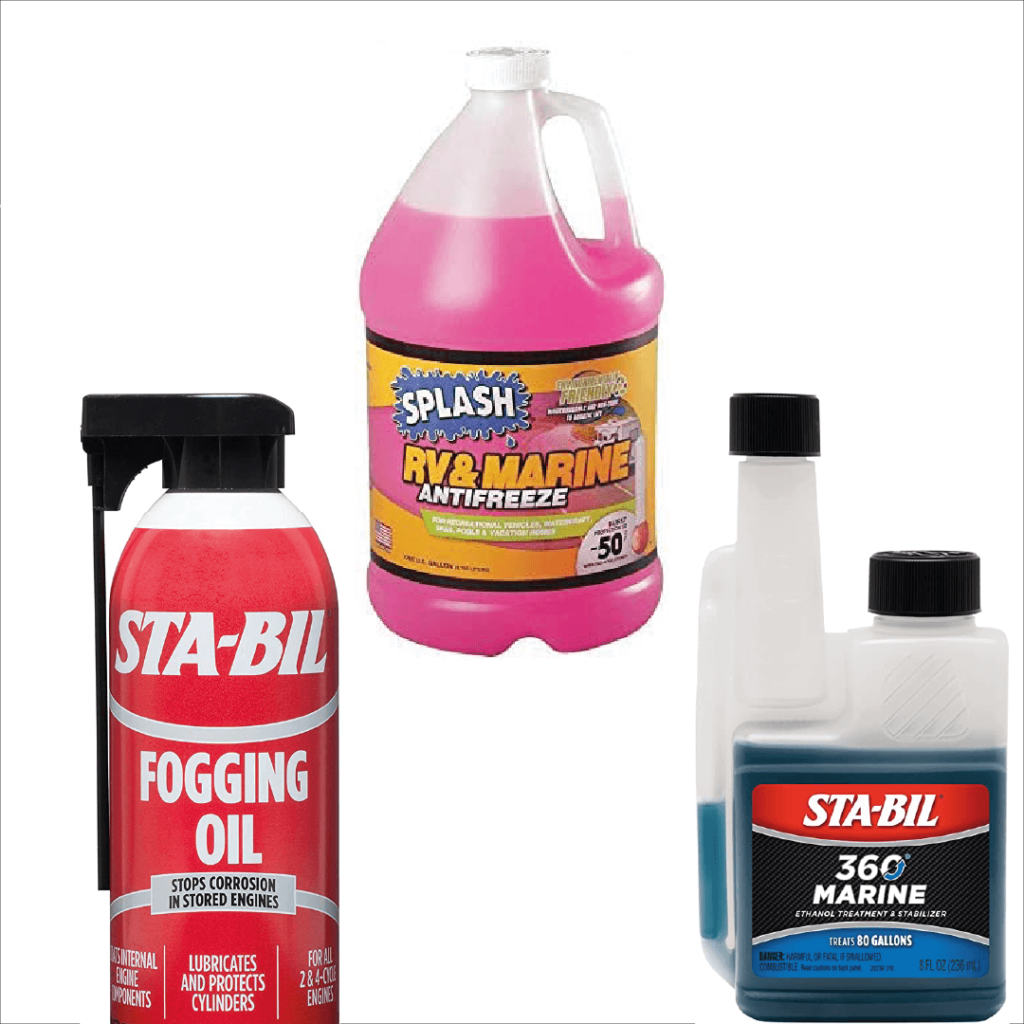
10. Prevent critters from finding a new home
Cover over the vent prevents pests and rodents from making it their winter residence. Steel wool, dryer sheets, and other similar items are physical barriers and deterrents to stop those little suckers from sneaking in and constructing nests.
11. Remove the Battery
A battery’s capacity to hold a charge decreases with age. If you leave your jet ski’s battery in storage over the winter, you may discover that it has died when you return for the following season. Taking the battery off your jet ski and maybe charging it on a trickle charger while it’s in storage is a must. The negative terminal should be disconnected first, followed by the positive terminal.
12. Charge the battery
Get yourself an automatic battery charger and hook up the battery. Do this somewhere safe, far from any potential fire sources. Keep the battery from freezing by charging it in a room where the temperature stays above freezing.
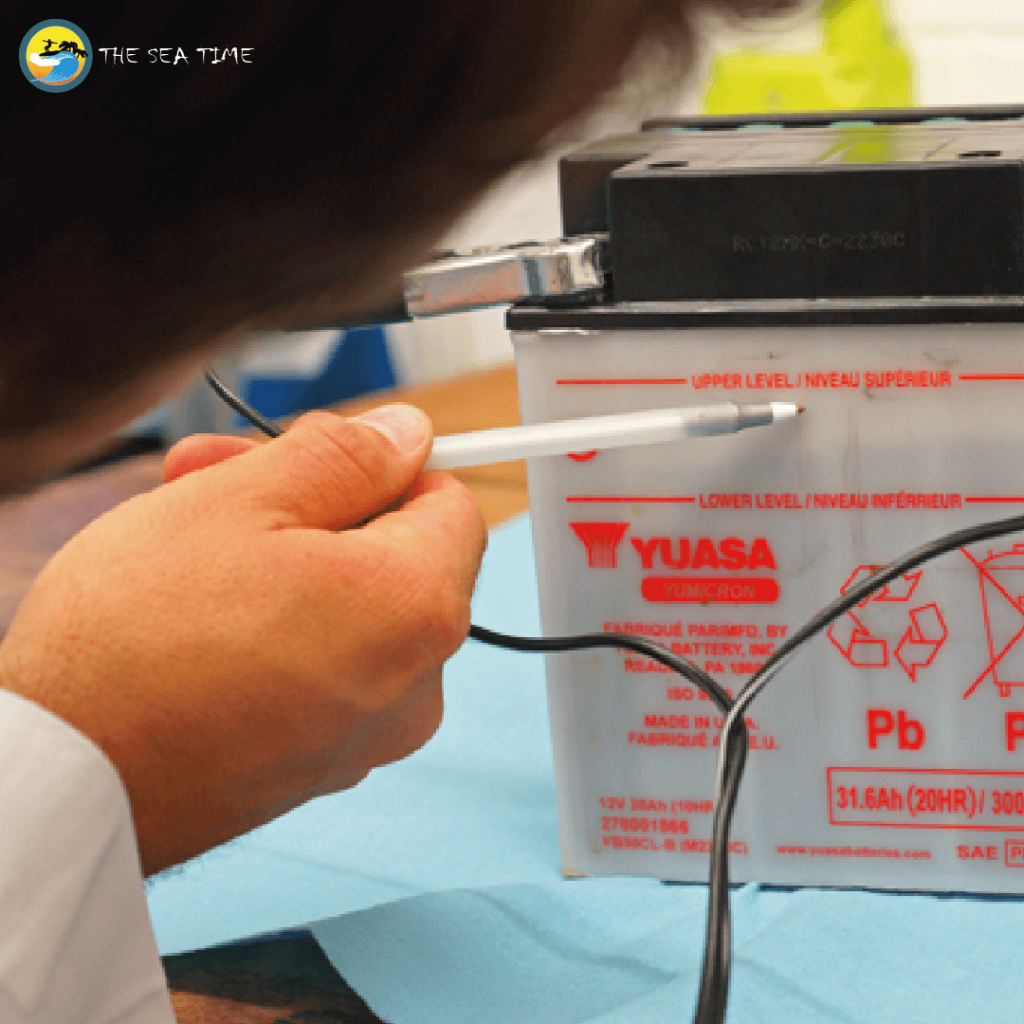
13. Change the Oil
Always replace the oil before putting your jet ski into long-term storage. Over many months of driving, old oil may thicken and cause engine problems if not replaced. If you’re putting your vehicle into storage, you should replace the oil and add fresh oil (and maybe a new oil filter) beforehand.
14. Add a Cover
While not strictly required, covering your jet ski while it’s not in use is a good idea. Covers may range from inexpensive plastic that will only last a few years to pricier canvas that will survive for many more. Pre-fitted covers are the best bet; however, it depends on how frequently you use your jet ski. Ideally, you would use a second tarp or cover to protect it.
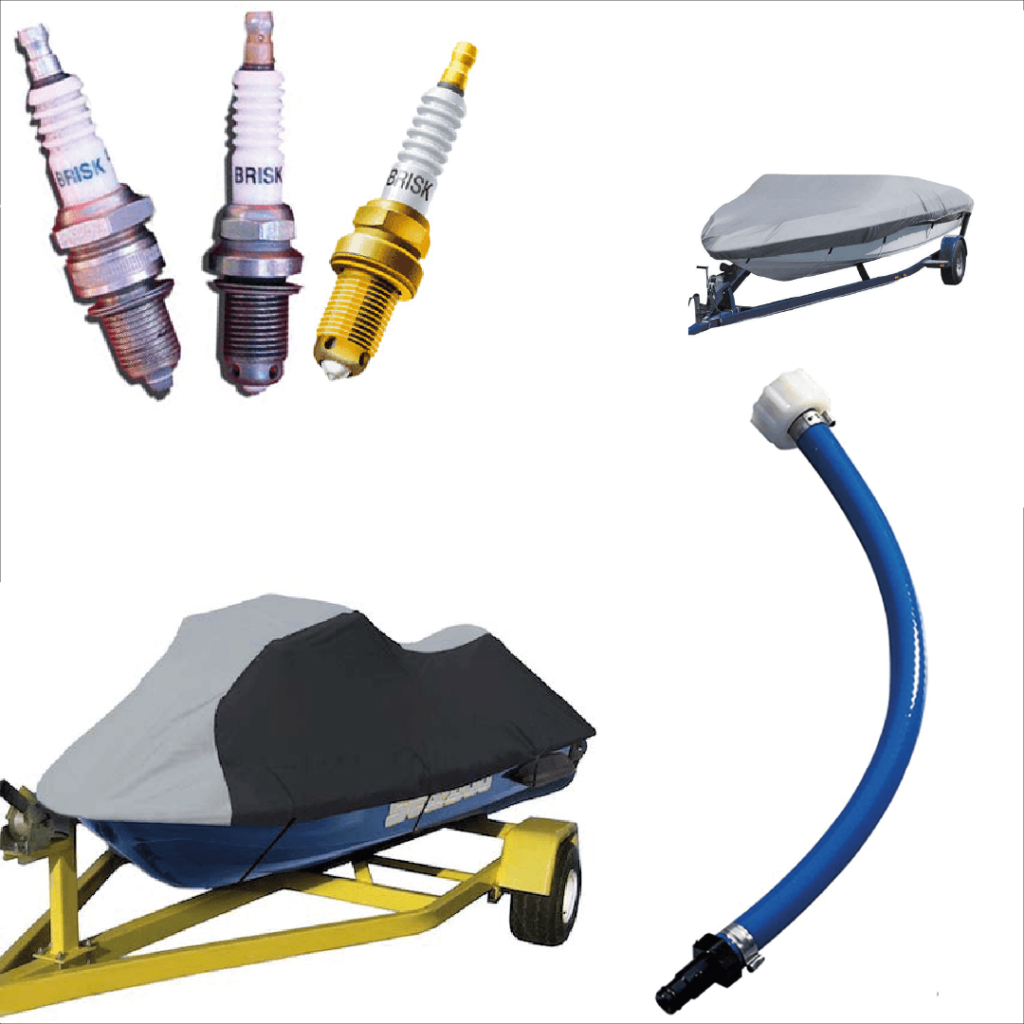
15. Best Jet Ski Storage Option
It would help to choose between indoor and outdoor vehicle storage depending on where in the nation you reside.
Indoor Jet Ski Storage Options
Keeping your jet ski in your garage is a safe and affordable choice if you have room at home. The only drawback to garage storage is that it may push a different car onto your driveway.
Another ideal choice for storing a jet ski is an indoor storage unit at a reputable self-storage facility. Vehicle storage inside provides security and weather protection.
Outdoor Jet Ski Storage Options
- Parking in a Driveway: During the off-season, keeping your jet ski in your driveway is always an affordable choice. The following season, you may take your jet ski and go.
- Covered Storage Unit: Some self-storage facilities could provide the option to store your vehicle under a roof in a covered storage unit. They offer some weather protection.
- Uncovered Storage Unit: While this is the most popular choice for car storage at self-storage facilities, it offers no weather protection.
- Marina Slip: Keeping your jet ski in a slip at a marina, sometimes known as “wet storage,” is suitable for individuals storing watercraft in warmer areas.
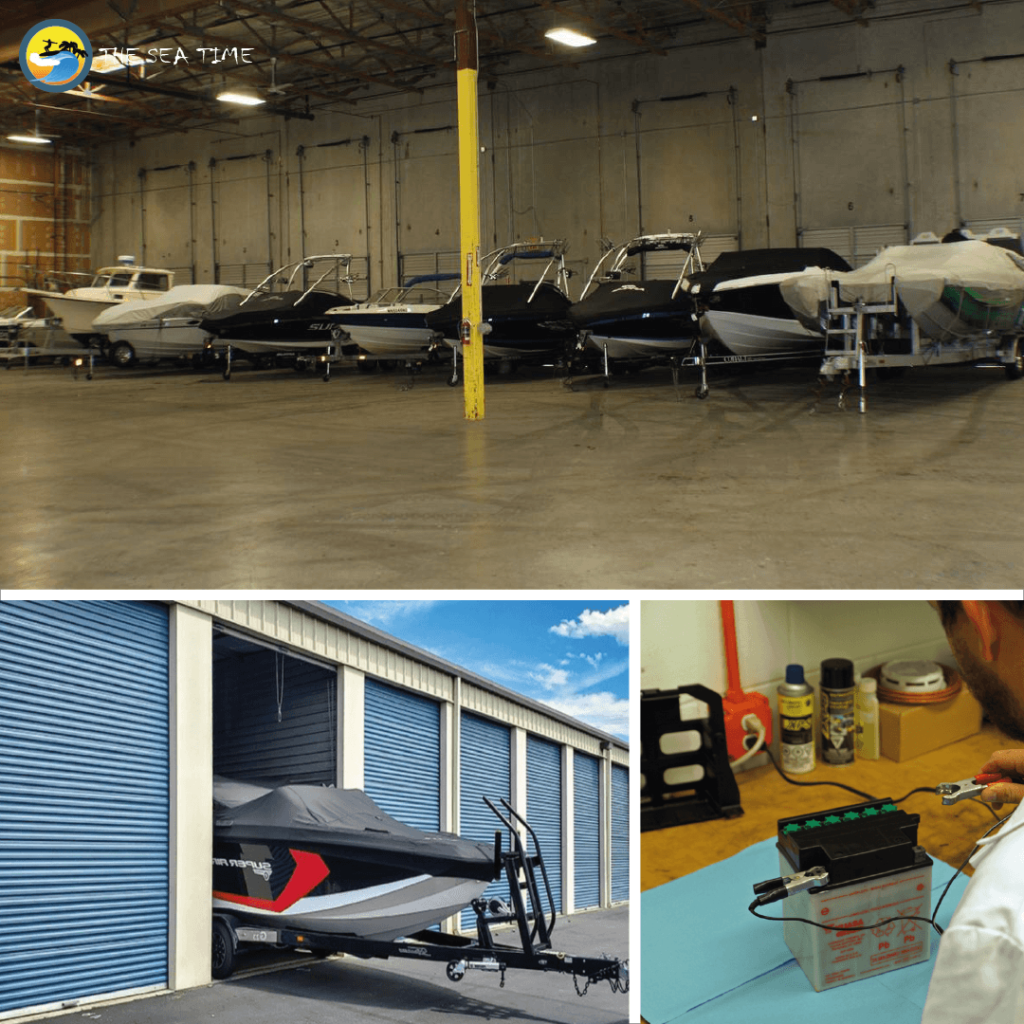
De-winterizing the Jet Ski
We must remember to de-winterize our jet skis before the riding season begins.
- Put premium gas in the tank.
- Install New spark plugs
- If the battery is charged, reconnect it.
- Check the operation and appearance by using the garden hose.
- Drain the water out and take it for a spin on the lake!
If you didn’t replace the oil and filter when you winterize your car, now is an excellent time to do so. Oil and filter changes should be performed at least annually and doing so now will prevent any unnecessary delays in your riding schedule.
